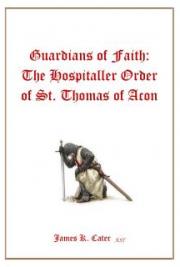FOOTNOTES:
[1] The name was probably taken from some sound in their language which was of frequent occurrence. They seem to have been called “Ottentoos,” “Hotnots,” “Hottentotes,” “Hodmodods,” and “Hadmandods” promiscuously.
[2] The first record we have of the Kafirs refers to the years 1683-84, when we are told the Dutch were attacked by the Kafirs, who, however, quickly ran away before the firearms of the strangers.
[3] A Kafir thief who had stolen an axe was rescued by a band of Kafirs on his way to jail.
[4] This is so far accurate that it certainly does not overstate the coloured population. No doubt the coloured people are more numerous. I have seen 800,000 stated as the black population of the Transvaal. But as the limits of the territory are not settled, any estimate must be vague.
[5] It must at least have seemed so when the Permissive Bill for South African Confederation was passed. The present disturbance will no doubt lead to the annexation of these districts.
[6]
|
Cape Colony
|
150,000
|
|
Orange Free State
|
30,000
|
|
The Transvaal
|
40,000
|
|
|
220,000
|
[7] I do not intend to suggest that any man should be excluded by his colour from the hustings. I am of opinion that no allusion should be made to colour in defining the franchise for voters in any British possession. But in colonies such as those of South Africa,—in which the bulk of the population is coloured,—the privilege should be conferred on black and white alike, with such a qualification as will admit only those who are fit.
[8] So called from a block of granite lying on the mountain over the town, to which has been given the name of The Pearl.
[9] Mr. Esselin told us that since he had been at Worcester he had had a few but only a very few Kafir children in his schools.
[10] This did not come at all from any property of the water but simply from the foulness of the place.
[11] At the present time about a hundredth part of the area of the Cape Colony is under cultivation. The total area comprises 20,454,602 morgen, whereas only 217,692 morgen are cultivated. The morgen is a little more than two acres. Of the proportion cultivated, nearly a half is under wheat.
[12] It should be understood that the places described in the last three chapters were not visited till after my return from Natal, the Transvaal, the Diamond Fields, and the Orange Free State.
[13] This conversation occurred and the above words were written before the disturbance of 1877. But the Kafirs here spoken of are the very Gaikas who have been expected to join the Galekas in their rebellion, but who have not as yet done so. Nor, as I think, will they do so.
[14] “The form of Constitutional Government existing in the Colony of Natal considered,” by John Bird. Mr. Bird’s object is to shew that Natal is not in a condition to be benefitted by a parliamentary form of government, and his arguments are well worthy of the attention of gentlemen in Downing Street. He thoroughly understands his subject, and, as I think, proves his conclusion. Mr. Bird is now Colonial Treasurer in Natal.
[15] My narrative of the facts of this period is based chiefly on the story as told in Judge Cloete’s five lectures on the Emigration of the Dutch farmers into Natal.
[16] He was murdered either by Dingaan or by another brother named Umolangaan who was then murdered by Dingaan. Dingaan at any rate became Chief of the tribe.
[17] A knobkirrie is a peculiar bludgeon with a thin stick and a large knob which in the hands of an expert might be very deadly. An assegai, as my reader probably knows, is a short spear with a sharp iron head.
[18] I have seen it asserted that this word comes from “jersey”—a flannel under shirt; but I seem to remember the very sound as signifying an old great coat in Ireland, and think that it was so used long before the word “jersey” was introduced into our language.







